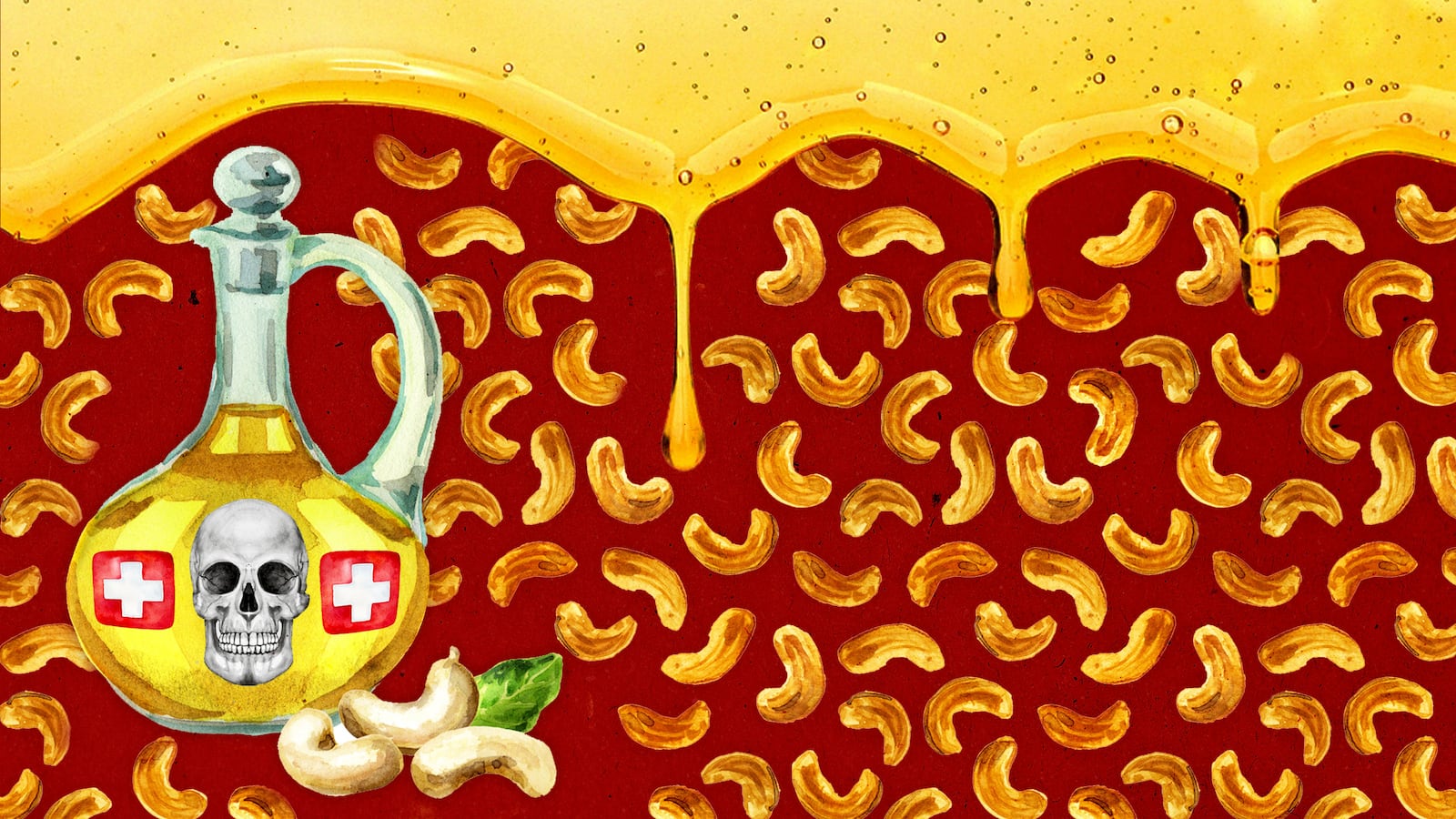You’ve probably cracked peanut shells, pistachio shells, even roasted some hazelnuts and de-shelled them. But have you ever cracked a cashew nut shell?
Probably not. In fact, you’ve likely never seen a cashew nut shell before. This isn’t because the nut companies are benevolent about making sure you have easy access to your cashew fix. The nut shells, in fact, are toxic and dangerous, soaked in oil compounds that can effectively burn your skin just as badly as dangerous acids.
Which makes the poisonous cashew nut shell perfect in its potential future role as an antibiotic ninja fighting off infectious diseases.
In fact, the deadly cashew nut might just be what the doctor ordered for the spate of “superbug” pathogens that have cropped up in recent years with terrifying frequency and strength. These pathogens are resistant to antibiotics and other conventional treatments we’ve used for most of the last century, making it harder to help patients get better. The Centers for Disease Control estimates that about two million Americans are hit with antibiotic-resistant bacterial infections every year, including 23,000 deaths.
Cashew nut shell oil is one of the stranger new compounds scientists are studying to help re-imagine antibiotics. Cashews are grown on tropical trees, inside hard green shells that—to anyone who has never seen them before—would probably ignore for being some sort of unripened fruit. The shells contain a motley of compounds called phenolic lipids, cardanol, and anacardic acid. Together, these compounds basically produce a sort of contact toxin that’s akin to poison ivy.
The key active compound in this mix is anacardic acid, and it’s this substance that is most intriguing for scientists.
“For a long time, these anacardic acids were used for folk purposes in places like India and the Ivory Coast,” Victor Nizet, a physician based at the University of California, San Diego, told The Daily Beast. Cashew nut shell oil was often harvested in small amounts for use in combating infectious funguses and abscesses.
“In terms of them being studied for formal medicinal purposes,” he said, “that started about 30 years ago, when we began to see the ability of these acids to suppress bacterial growth.”
More than 3.5 million tons of cashews are produced every year. The shells are roasted at high temperatures to destroy the oils, and then the shells are discarded during production and packaging before they ever make it to the store front. But that also means there is a huge amount of cashew oil that is simply thrown out. And if the oil really does have a potential for fighting aggressive diseases, the shells might actually be more valuable than the nuts themselves.
Nizet thinks there’s been resurgence in studying cashew nut shell oil in the last five years or so thanks to the looming threat of what kind of havoc antibiotic resistance could wreak on public health. In India, which happens to be one of the largest cashew nut producers in the world, he said there’s a specifically large concern about what a superbug epidemic could do to extremely dense populations in the region. Physicians in the region and elsewhere around the world are looking to mine older, traditional medicines and adapt them to tackle new challenges.
“There’s a rethinking to look at chemicals that don’t just attack bacteria, but that can also work in concert with the immune system to eradicate infection,” he said. “When you study the infection process, there are tons of other drugs that might work through other properties.”
This is what makes anacardic acids such a promising compound for infectious disease treatment. There has already been quite a bit of work outlining the antimicrobial properties of anacardic acids for fighting infections, particularly when it comes to methicillin resistant Staphylococcus aureus (also known as MRSA). Anacardic acids don’t just show an ability to attack the infectious pathogen and eliminate it; they also boost the host’s immune system and give the body’s natural processes a bigger leg-up in fighting the infection. This sort of strategy is particularly helpful for treating patients in a way that fights infection without killing healthy bacteria via general antibiotics.
Nizet managed to get together with colleagues in the Indian state of Kerala to discuss starting up an investigation of to what extent anacardic acids derived from cashew nut shells could help fight a number of different common bacterial infections, including MRSA, through this two-pronged approach—an antimicrobial activity that directly attacked bacteria, while also boosting activity by neutrophils, a type of white blood cell that form a constituent part of the body’s immune system.
A recent study they ran found varying success in the compound’s direct ability to kill bacteria (anacardic acids are better at killing gram-positive bacteria like Staphylococcus but not as active against species like Escherichia coli), but found more encouraging results in the ability of anacardic acids to spur neutrophils into attacking infectious bacteria of all kind.
Nizet emphasizes the mechanism by which the anacardic acid fights bacteria is not totally well known, but the structure of the compound suggests similarities to salicylic acid (often used as a dermal treatment against warts, ringworm, and other problems). Meanwhile, the neutrophilic boost—specifically allowing neutrophils to produce more peroxide and other oxygen radicals that kill bacteria, as well as entrapping bacteria through a sort of organic immune net that kills them—is caused by the ability of anacardic acid molecules to bind with neutrophil receptors and incite pathways that augment activity.
Nizet’s latest investigation is maybe the more forceful investigation into the potential of anacardic acids for use in fighting diseases, but it’s not alone. Other groups are investigating how these compounds can be used to stop infections in other capacities as well, such as preventing biofilm development on catheters used in hospital stays. Still others have focused in on the immune system-enhancing traits of these compounds in fighting other diseases like cancer.
What we know about cashew oil’s promise as an antibiotic remains limited, and it will be quite a long time before we finally see clinical trials finally come to fruition. But the preclinical evidence so far has been encouraging, and as we trudge forward into a future where superbugs pose an increasing threat, pharmaceutical firms may turn to cashew nut oil for a viable drug or topical formulation that’s used widespread to combat infections.
“You see it in cancer right now, a big innovative push in fighting cancers with new immunotherapies,” said Nizet. “We need to bring that kind of creativity and cooperation with the immune system to deal with superbugs.”







